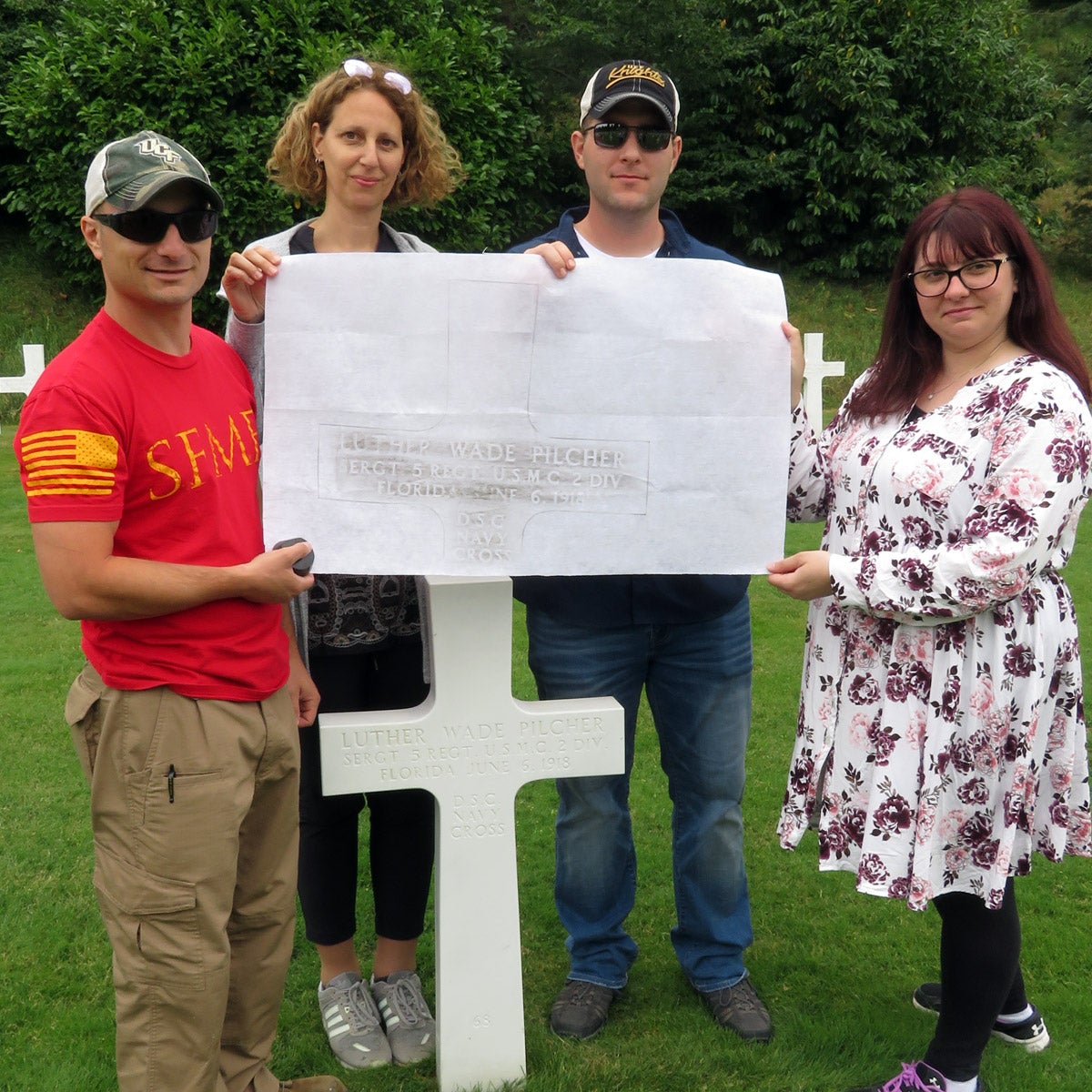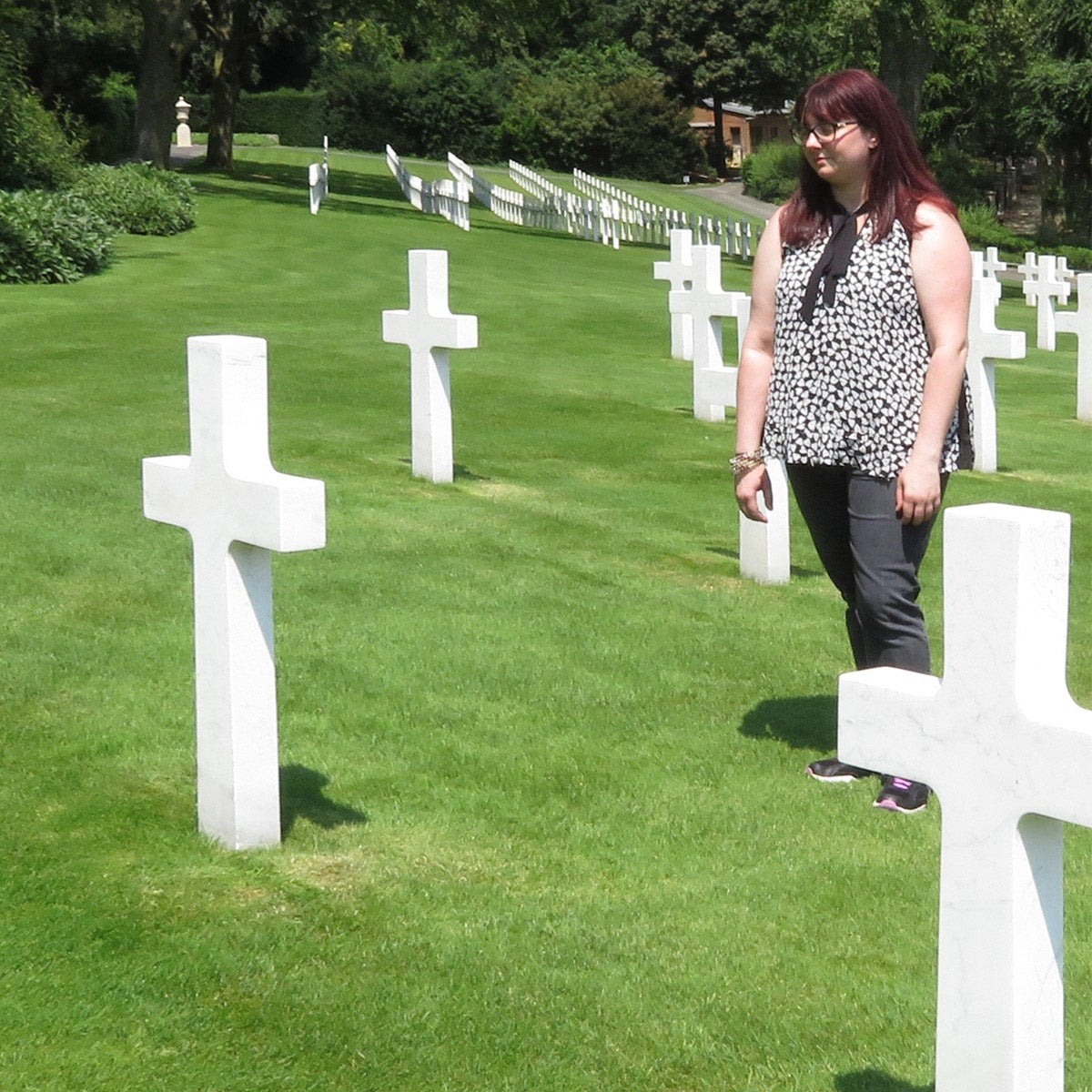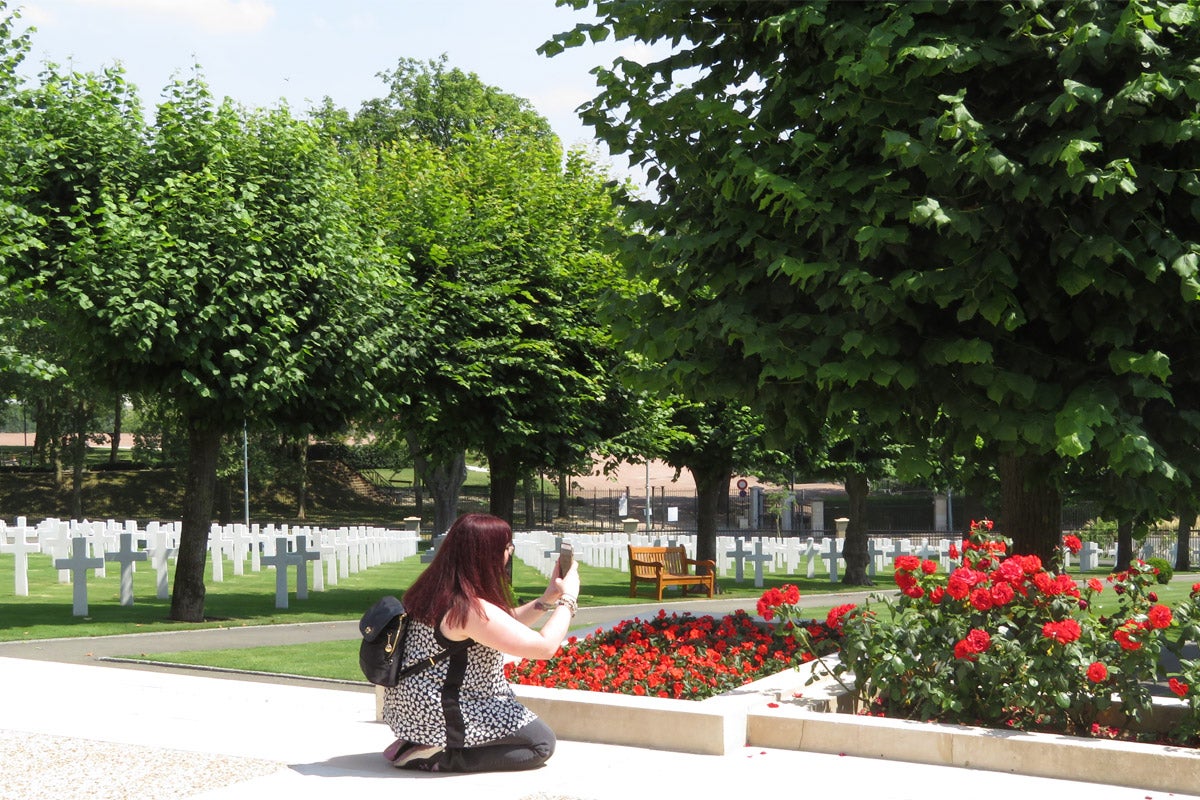None of the past 100 Julys in France can compare to July 2018.
A family in Nantes became the first in the world to move into a 3D-printed home. Around Paris, temperatures were 10 degrees warmer than normal. People throughout France stopped everything, or at least slowed down, to follow the national soccer team on its run to the 2018 Men’s World Cup title.
In the middle of all of this, four UCF graduate students completed their own journey of historic impact.
“The people I was with, the things we saw, the places where we walked … it’s impossible to describe.”
“Nothing compares to what I’ve just been through,” says Kayla Campana ’15, who, like her grad-school colleagues is working toward a master’s in history. Her thesis: the psychological trauma of the female nurses who served in World War I. “The people I was with, the things we saw, the places where we walked … it’s impossible to describe.”

Stories of the Past Come to Life
Even Amelia Lyons, professor of history and director of graduate programs for UCF’s history department, didn’t see this kind of impact coming when she first helped the university become both a partner and a poster child for the National Cemetery Administration’s Veterans Legacy Program.
In May 2017, she led a group of about two dozen UCF students and 150 seventh graders to the Florida National Cemetery in Bushnell, Florida. For the UCF students, the experience was the culmination of bigger project in which they’d spent a semester writing biographies about specific veterans who had served the United States during World War I. (The stories can be found at vlp.cah.ucf.edu). Campana was among the UCF students in the cemetery that day.
“The spark I saw in those kids made me want to do more to connect the stories of World War I veterans to the present and keep those stories alive,” says Campana. “The support from the Legacy Program allowed me to take my research to France this year.”
To say it was a moving experience is a huge understatement.
The four graduate students had their own boots on the same ground where the soldiers and nurses of World War I crawled, slept and knelt in prayer. They walked 64 miles and climbed 400 flights of stairs, through cities as big as Paris and villages as small as Belleau Wood, over fields and through trenches and along the very spot at Meuse-Argonne where 26,000 American soldiers lost their lives in just six weeks, a costly offensive that helped end the war, which at that time had been called “the war to end all wars.”
Adding to the weight of the research experience: Two of the four grad students are American combat veterans themselves, having fought in Iraq and Afghanistan. One of them looked over the expanse of Meuse-Argonne from a hill, saying, “Even I can’t believe how much territory our troops had to take, and with minimal resources.”
Humbling. Profound. Eye-opening. No one can come up with just the right word to describe moments like that.
“This is the type of research that you can’t get from spending time in archives.”
“This is the type of research that you can’t get from spending time in archives,” says Lyons, who had been to France 20-some times to research French Colonial history. “To see what started as academic work turn into something very personal with each step … no one planned for that.”
And they all have a hard time explaining what it’s like to take steps through the cemeteries that the American Battle Monuments Commission, with help from the people of France, keep so immaculate to honor the American soldiers to whom the French are still deeply thankful.

More than a History Project
The academic plan was to take photos and coordinates for an app that brings up the student-authored biographies and so each memorial can be found on maps for generations to come. But something immeasurable also happened in those cemeteries.
While the students paid respects over the gravesites of the very people they’d written about, they began to mentally fill the blanks in those stories that until now have never been told — exactly 100 years after the war ended.
Lyons has personal reasons for leading the Veterans Legacy Program.
“It’s a way to honor my grandfathers who served in World War II. One of them was awarded two Purple Hearts and a Bronze Star,” she says. “And my dad — he served in Vietnam and spent his entire life working for veterans’ causes before he died of cancer four years ago. He would have been our biggest cheerleader.”
And what about Campana? She went to France to get a stronger sense for the service of the two nurses she’d been researching, but didn’t hold out hope of finding where they were buried. Twins from an upper-class home in New York City, they’d gone overseas to work on the frontlines. While leaving for home on a boat along the Garonne River at the conclusion of the war, they jumped overboard.
So Campana was not prepared for what she found at the American Cemetery in Suresnes, just outside Paris: the names of the nurses on gravestones, resting side by side.
“I’m doing it for them,” she says, “so others won’t forget.”
“That pushed everything to another level for me,” she says. “I could envision them tending to wounded soldiers, walking in the same places where we’d been, and also seeing things they could not un-see. I now understand their story as much as I can possibly understand it. This isn’t just a thesis for me anymore.”
Now, in the 100th year since World War I ended, Campana and her peers want to bring life back to the stories that have been lost.
“I’m doing it for them,” she says, “so others won’t forget.”





